Science Y10: DNA & Genetics
1/32
There's no tags or description
Looks like no tags are added yet.
Name | Mastery | Learn | Test | Matching | Spaced |
|---|
No study sessions yet.
33 Terms
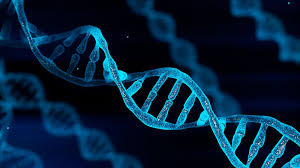
DNA
The human body is comprised of billions of microscopic cells working together as one unit. Every cell contains DNA (Deoxyrybonucleicacid). Our DNA is identical in every cell of our body. It contains many genes, which hold information about traits such as eye colour. When condensed (wound up) it forms a structure called a chromosome. DNA acts as a blueprint for your body to grow, and your cells to multiply.
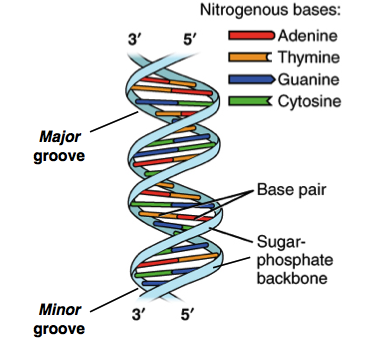
The double helix - Watson Crick model” (1953)
The shape of modern DNA is known as “The double helix”, which looks like a twisted rope ladder.
Structure of DNA
The outer sides of the ladder (backbone) is comprised of alternating sugar (deoxyribose) and a phosphate group. On a diagram, the phosphate is represented as a circle while the sugar is a pentagon. The bars (in the middle) are made of 4 nitrogenous bases which pair up.
Base Pairing Rule
Adenine always pairs with Thymine (A + T)
Cytosine always pairs with Guanine (C + G)
DNA Replication
DNA replication is the biological process by which a cell makes an exact copy of its DNA. This process happens during cell division, ensuring that each new daughter cell receives a complete set of chromosomes.
Inside the Cell
Cell → Nucleus → Chromosome (wound up structure made of DNA) → DNA → Gene (section of DNA which codes for a certain protein)
Chromosome
Each chromosome is a double structure, made of 2 chromatids joined together. Humans have 46 chromosomes (23 pairs) in the nucleus of each cell.
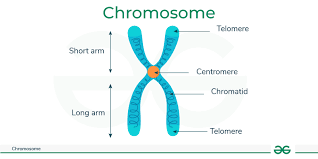
Homologous Chromosome
Pair of chromosomes, one from each parent, which are the same length and have same genes in same locations.
Autosome
An autosome is a non-sex chromosome.
Somatic Cell
Somatic cell is a term for all body cells which are not sex cells (sperm or egg). Human body (somatic) cells are diploid with 46 chromosomes (2n)
Gamete
Gamete is the term for a sex cell. They can be either eggs (produced in the ovaries of a woman) or sperm (produced in the testes of a man). Unlike somatic cells, gametes are haploid, meaning they contain half the number of chromosomes (23 in humans) to ensure that when two gametes fuse, the resulting zygote has the correct diploid number of chromosomes.
Sex cells (gametes) are haploid with 23 chromosomes (n).
Zygote
Zygote is the term for the fusion of sperm + egg
Haploid number
Haploid (n) cells contain a single set of chromosomes. Mitosis is haploid.
Diploid Number
Diploid (2n) cells contain two sets of chromosomes (2n). Meiosis is diploid.
Mitosis
Mitosis is the process where a single cell divides into two genetically identical "daughter" cells, each with the same number of chromosomes as the original cell. Mitosis is haploid because it creates 2 new cells with the same number of chromosomes as the parent cell.
Mitosis Stages
IPMAT
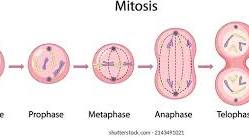
Mitosis Stage 1 - Interphase
Interphase (1st stage) is when the cell prepares for cell division by doing dna replication and creating sister chromatids and then centrosomes appear.
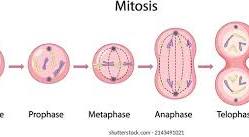
Mitosis Stage 2 - Prophase
Prophase is when the chromosomes begin to condense and become more visible the nucleus disappears then spindle fibres emerge from the centrosomes and the centrosomes move to the opposite ends of the cell.
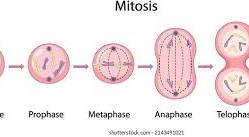
Mitosis Stage 3 - Metaphase
Metaphase is when the spindle fibres connect the sister chromatids with the centrosomes and make sure everything is lined up properly before the splitting up of the sister chromatids
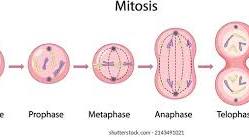
Mitosis Stage 4 - Anaphase
Anaphase is when the cell elongates and then the sister chromatids split off into their own chromosomes
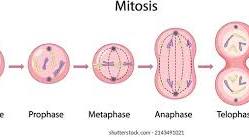
Mitosis Stage 5 - Telophase
Telophase is the when the chromosomes decondense and become “invisible” again and the the nucleus and nucleolus form and again and then the mitotic spindle fibres break down.
Meiosis
Meiosis is a specialized type of cell division that occurs in sexually reproducing organisms to produce gametes (sperm or egg cells). It involves two rounds of division (Meiosis I and Meiosis II) that start with a single diploid cell and result in four genetically unique, haploid daughter cells, each containing half the number of chromosomes as the parent cell.
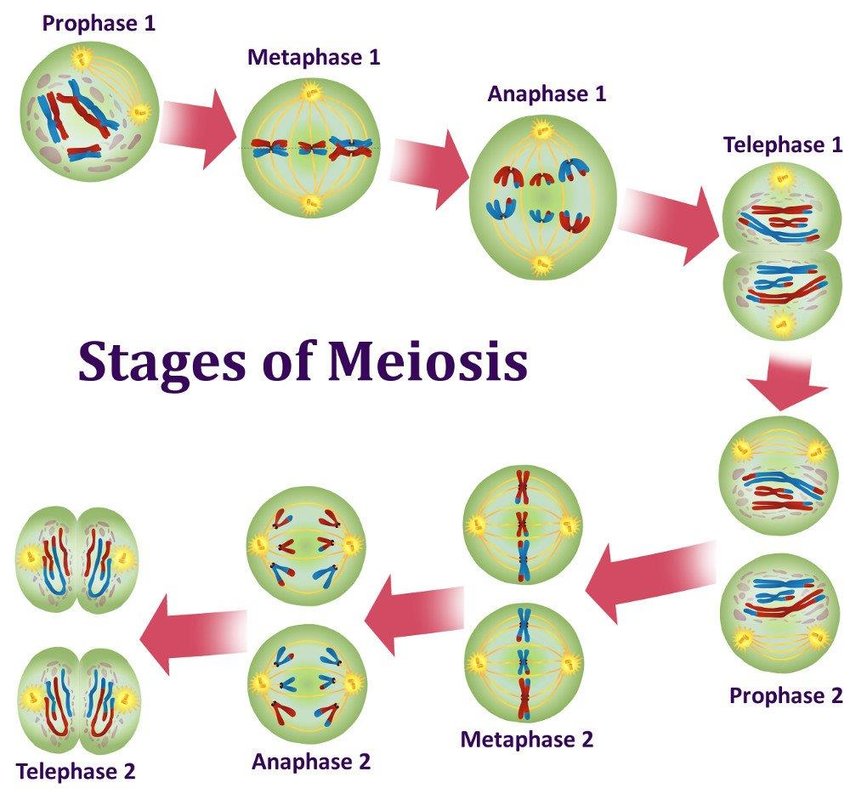
Meiosis Stages
IPMAT then PMAT
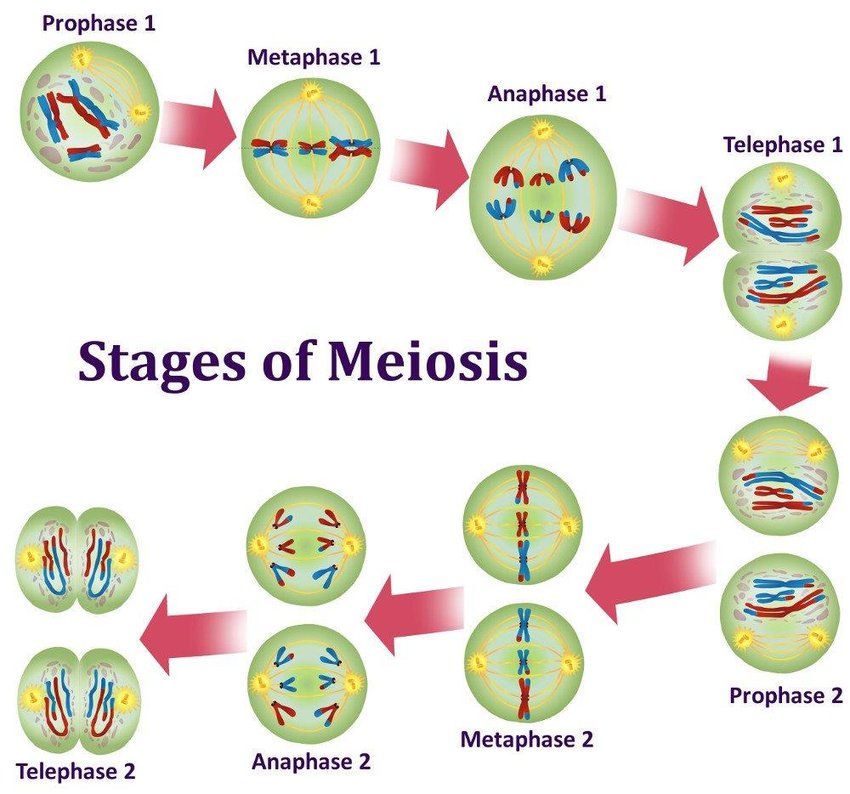
Meiosis I Stage 1 - Interphase
Chromosomes condense and become visible.
Homologous chromosomes pair up (this is called synapsis).
Each pair (called a tetrad) exchanges sections of DNA in a process called crossing over, which increases genetic variation.
The nuclear membrane dissolves and spindle fibres form.
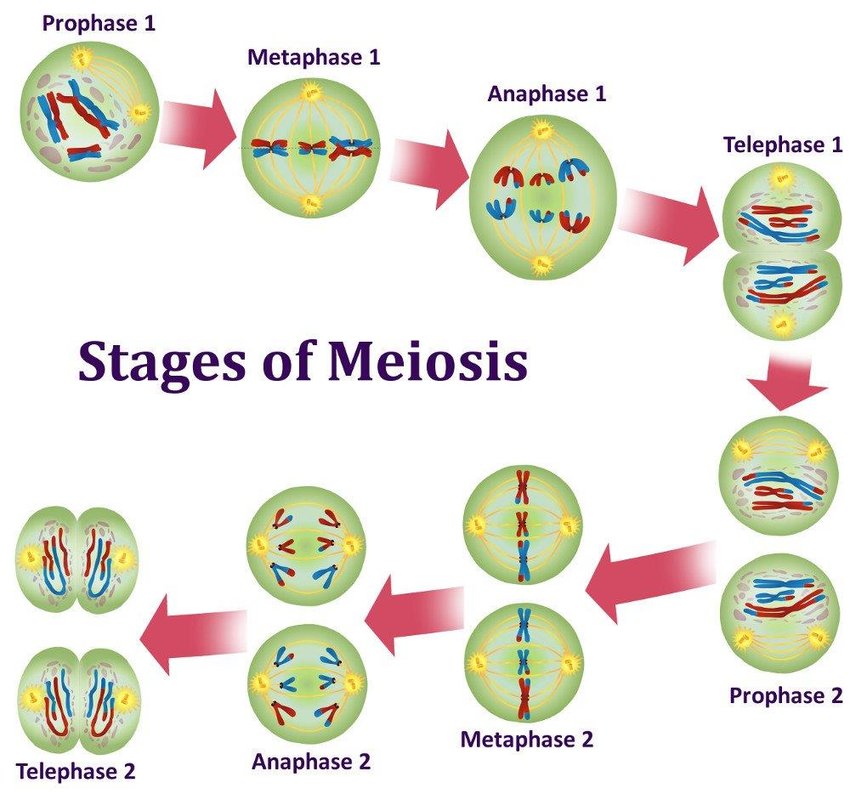
Meisis I Stage 2 - Prophase
The tetrads (homologous pairs) line up in the middle of the cell (equator).
The orientation is random — called independent assortment, another source of genetic variation.
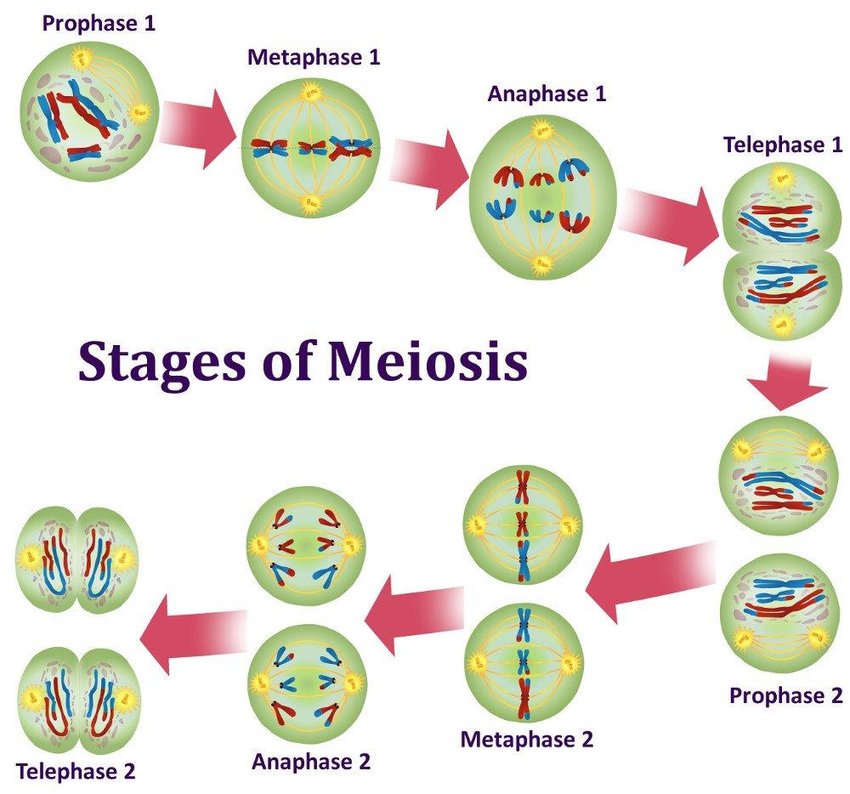
Meiosis I Stage 3 - Metaphase
Homologous chromosomes are pulled to opposite poles by spindle fibres.
Sister chromatids remain attached (unlike in mitosis).
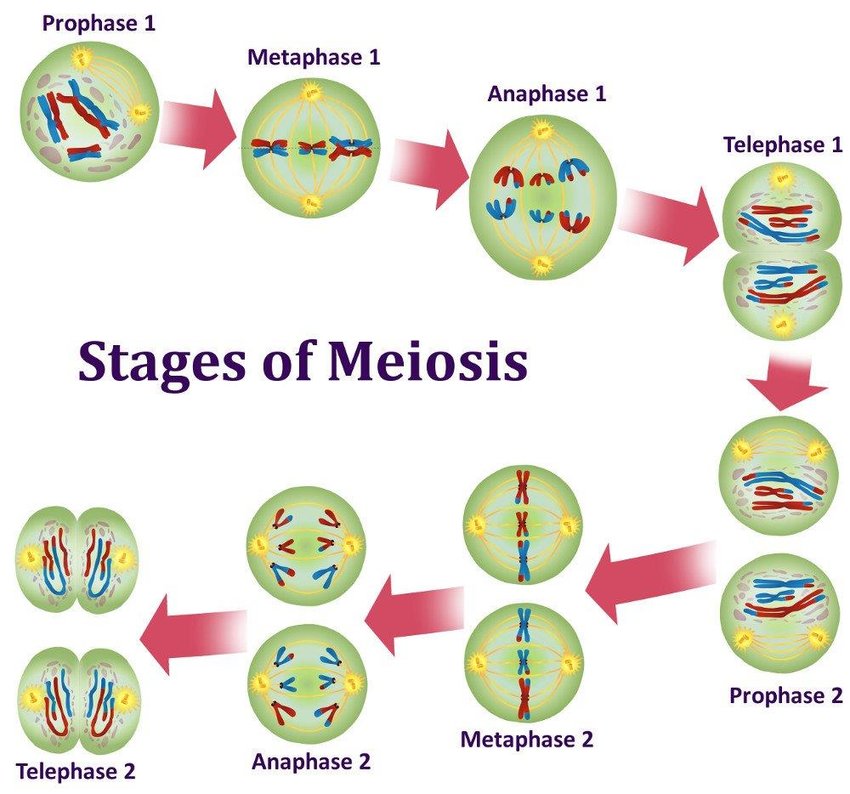
Meiosis I Stage 4 - Anaphase
Chromosomes gather at the poles.
The cell divides into two haploid cells, each with half the number of chromosomes (but still with duplicated chromatids).
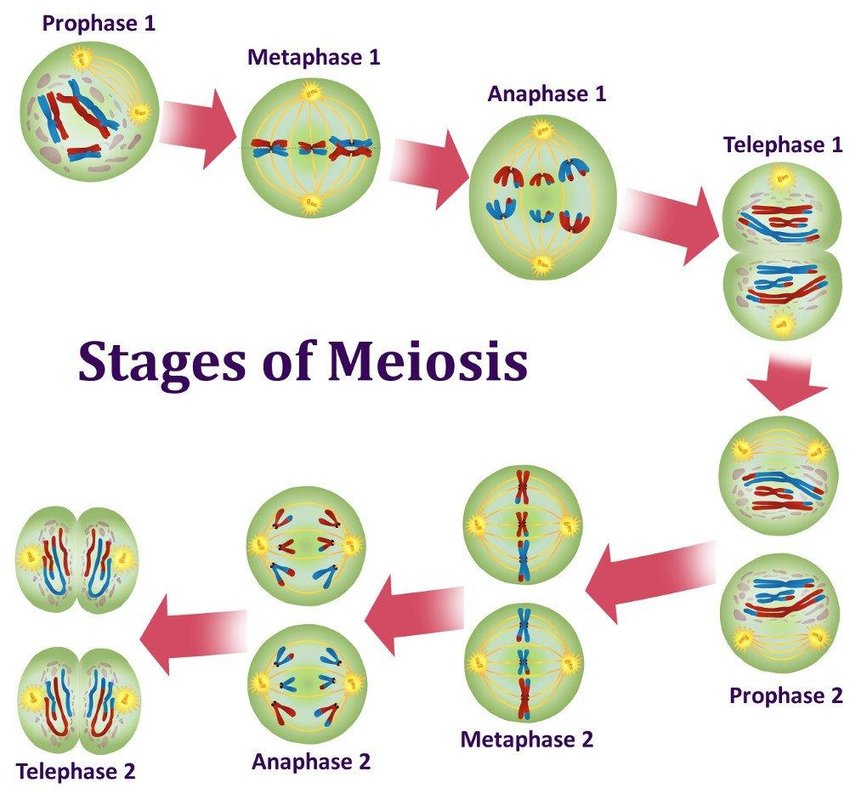
Meiosis I Stage 5 - Telophase
Chromosomes gather at the poles.
The cell divides into two haploid cells, each with half the number of chromosomes (but still with duplicated chromatids).
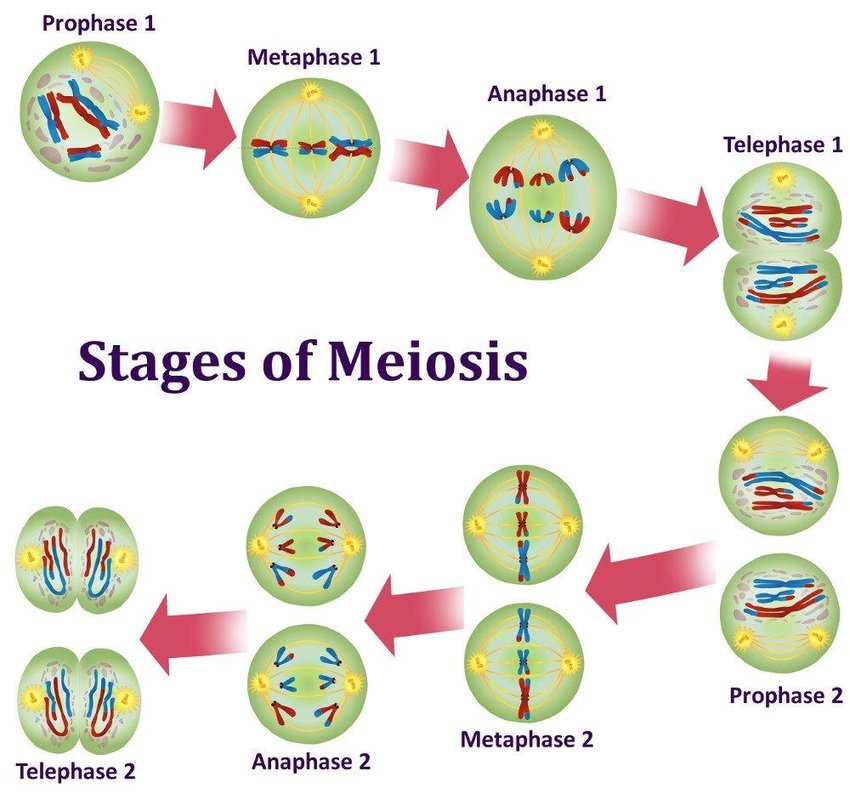
Meiosis II Stage 1 - Prophase
Chromosomes condense again if they had uncoiled.
New spindle fibres form.
No crossing over this time.
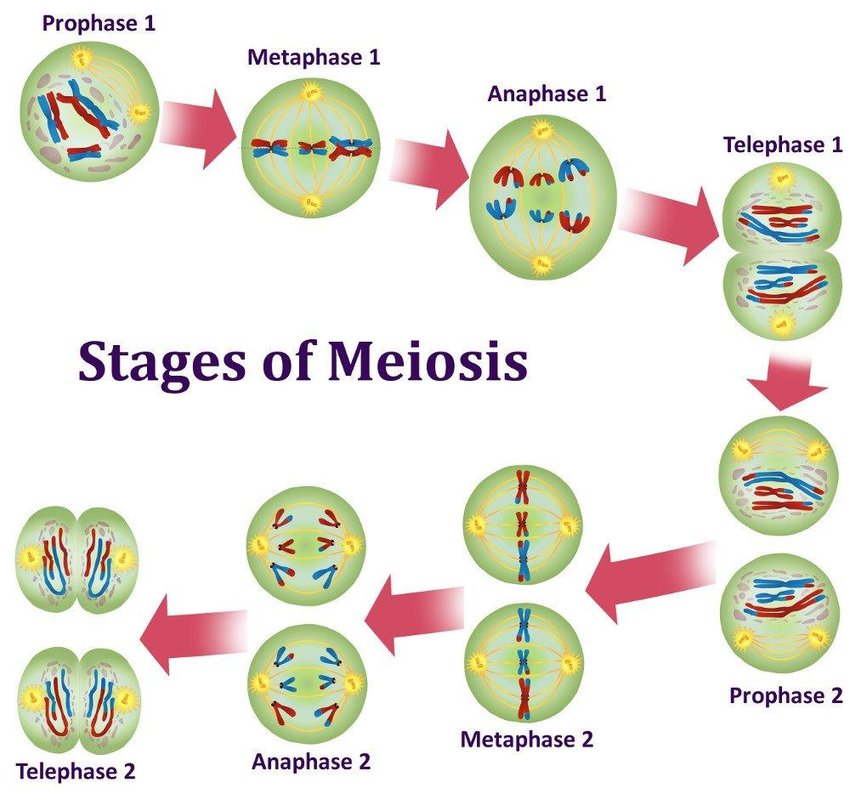
Meiosis II Stage 2 - Metaphase
Chromosomes line up singly along the equator of each cell.
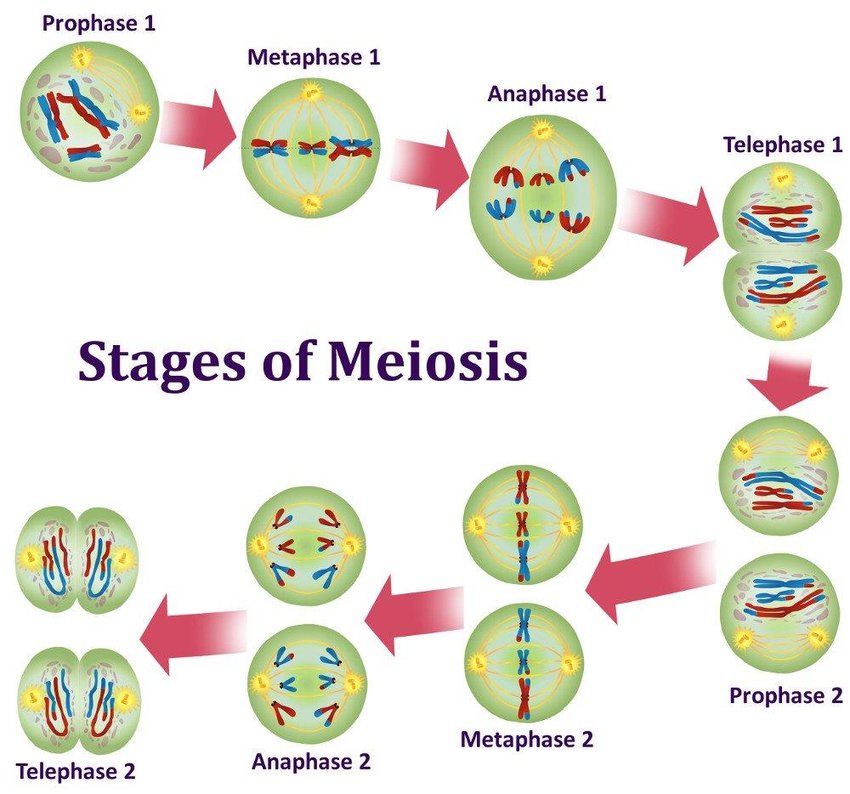
Meiosis II Stage 3 - Anaphase
Sister chromatids separate and move to opposite poles.
Each chromatid is now considered a single chromosome.
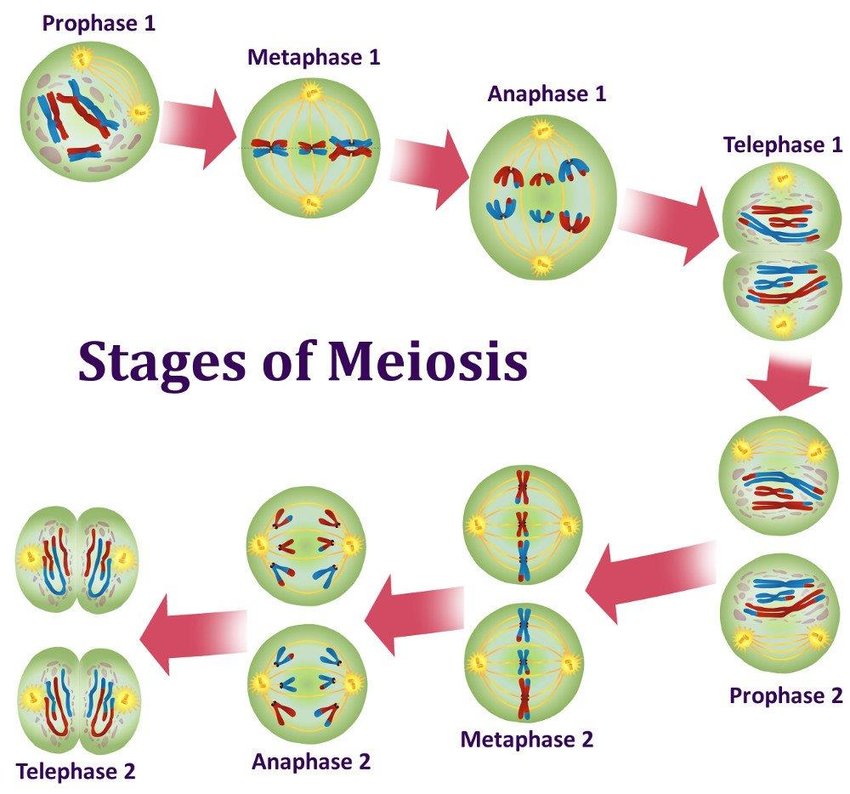
Meiosis II Stage 4 - Telophase
Nuclear membranes reform around each group of chromosomes.
Both cells divide, forming four genetically unique haploid cells.
Cytokinesis:
Cytokinesis: The cytoplasm divides, and four haploid daughter cells are formed.